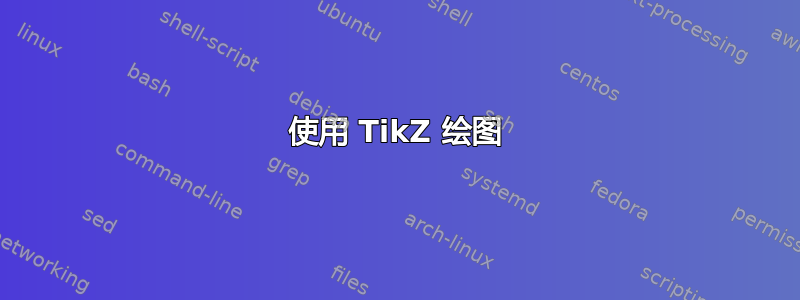
一位同事请我帮忙用 TikZ 制作图纸,以便将其包含在 LaTeX 文档中。由于我不是 TikZ 专家,所以我无法提供帮助,而且我不知道 GeoGebra 是否可以重现这些图纸。有没有什么提示可以解决这个问题?


答案1
这是我在 Tikz 绘图上的尝试,数学排版留给你。由于我看不清楚你的笔迹,一些标签文本可能需要更正。
这里定义了myarrow箭头装饰和dot实心圆的两种样式。

代码
\documentclass[]{article}
\usepackage[margin=1cm]{geometry}
\usepackage{tikz}
\begin{document}
\usetikzlibrary{decorations.markings,arrows}
\tikzset{myarrow/.style={decoration={markings,
mark=at position 0.3 with {\arrow{stealth'}},
mark=at position 0.7 with {\arrow{stealth'}}
},postaction={decorate}
}}
\tikzset{dot/.style = {
draw, fill,
circle,
inner sep=0pt,
outer sep=0pt,
minimum size=2pt
}}
\begin{tikzpicture}]
\node[dot,label={right:$z_0$}] at (0,0) (z0){};
\node[dot,label={above:$0$}] at (-3,-3) (0){};
\node[dot,label={above:$1$}] at (0,-3) (1){};
\node[dot,label={above:$\infty$}] at (4,-3) (inf){};
\draw[myarrow] (0,0) .. controls (-8,-5) and (-3,-5) .. (0,0);
\draw[myarrow] (0,0) .. controls (-2,-5) and (2,-5) .. (0,0);
\draw[myarrow] (0,0) .. controls (4,-5) and (10,-5) .. (0,0);
\end{tikzpicture}
\begin{tikzpicture}[scale=1, z={(.707,.3)}]
\draw (-10,0) -- (-3,0);
\draw[->] (-3,1)node[left]{$\mathcal H$} to[out=90,in=180]node[midway,above]{$\sigma=\frac{v_1}{v_2}$} (2,3);
\draw[very thick](-9,0)--(-6,0);
\draw (-9,2pt ) -- (-9,-2pt) node[above]{$0$};
\draw (-6,2pt ) -- (-6,-2pt) node[above]{$1$};
\draw (-3,2pt ) -- (-3,-2pt) node[above]{$\infty$};
% -- Pyramid
\draw (2,3,2)node[above](A){A} -- (0,0,0) node[left](B){B} -- (4,0,0) node[right](C){C} -- (4,0,4) -- (2,3,2) -- (4,0,0);
\draw[dashed] (2,3,2) -- (0,0,4) -- (0,0,0);
\draw[dashed] (0,0,4) -- (4,0,4);
\draw (2,3,2) node[midway,shift={(3,2.5)}]{$c\pi$} -- (2,2,2.2) arc (-90:-120:1.5);
\draw (0,0,0) node[midway,shift={(1.3,0.5)}]{$b\pi$} -- (1,0,0) arc (0:45:1);
\draw (3,0,0) node[midway,shift={(2.5,0.5)}]{$a\pi$} arc (180:98:1);
\fill[gray,opacity=0.3] (0,0,0)--(4,0,0)--(2,3,2)--cycle;
\end{tikzpicture}
\end{document}
答案2
在同事的帮助下,我成功解决了这个问题:

\begin{tikzpicture}
\begin{scope}
\draw [->,>=stealth] (-1,0)--(3,0) node[below]{$\infty$};
\draw [very thick] (0,0) node[below]{$0$} -- (1,0) node[below]{$1$};
\node at (0.5,1)[scale=2] {$\mathcal H$};
\end{scope}
\begin{scope} [xshift=9cm]
% La face grisée
\draw [fill=gray!20](0,0) node[below]{$\lambda\pi$}
.. controls ++(-0.25,0.25) and ++(0.5,0) ..
(-1.5,0.5) node[left]{$\nu\pi$} -- (0,2) node[above]{$\mu\pi$} -- cycle;
% l'autre face visible
\draw (0,0) .. controls ++(0.25,0.25) and ++(-0.5,0) .. (1.5,0.5)--(0,2);
\end{scope}
\begin{scope} [xshift=5cm,yshift=1cm]
\draw [->,>=stealth] (-2,0) .. controls ++(1,0.7) and ++(-1,0.25) .. (2,0.5)
node[midway,above] {$\sigma=\frac{\nu_1}{\nu_2}$};
\end{scope}
\end{tikzpicture}
\vspace{3cm}
\begin{tikzpicture}
\begin{scope}
\draw (0,0) node{$\bullet$} node[above] {$0$};
\draw (2,0) node{$\bullet$} node[above] {$1$};
\draw (5,0) node{$\bullet$} node[above] {$\infty$};
% La boucle autour de 0
\draw (2,2) node{$\bullet$} node [above]{$z_0$}
.. controls ++(-1,-0.8) and ++(-0.9,0.9) .. (-0.5,-0.5) node[near start,sloped]{$<$}
.. controls ++(0.7,-0.7) and ++(-0.8,-1) .. (2,2);
% La boucle autour de 1
\draw (2,2)
.. controls ++(-0.3,-1) and ++(-0.9,0) .. (2,-0.7) node[near start,sloped]{$<$}
.. controls ++(0.7,0) and ++(0.3,-1) .. (2,2);
% La boucle autour de OO
\draw (2,2)
.. controls ++(1,-1) and ++(-0.5,-0.5) .. (5.5,-0.5) node[near start,sloped]{$>$}
.. controls ++(0.9,0.9) and ++(1,-0.5) .. (2,2);
\end{scope}
\end{tikzpicture}


